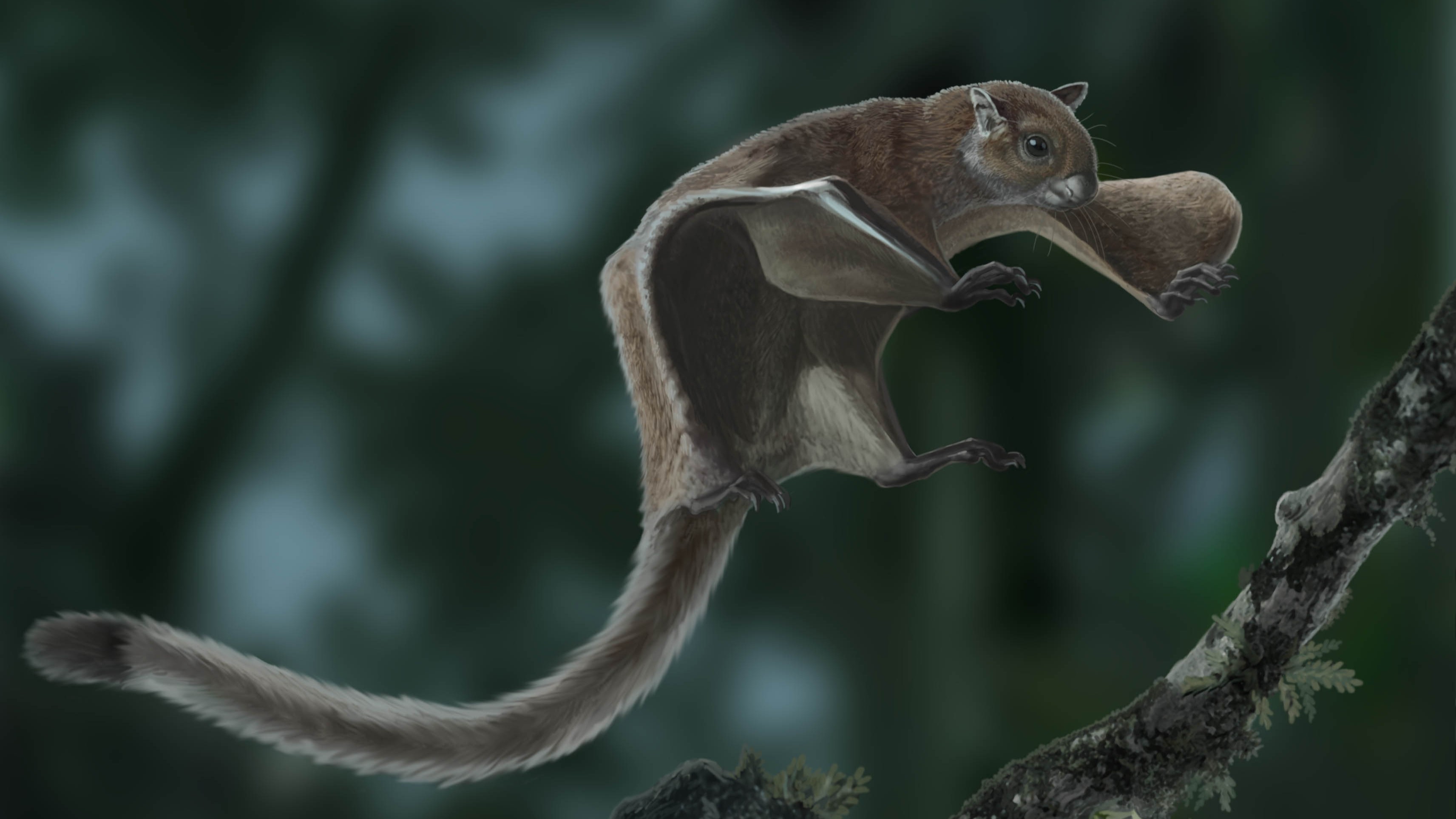
Giant flying squirrels that were as big as house cats glided across North America around 5 million years ago, researchers have discovered, after identifying an unusual fossil found inside an ancient sinkhole.
Researchers identified the flying squirrel fossil among a cache of animal remains that were unearthed in Tennessee 25 years ago. The specimen belongs to an extinct genus called Miopetaurista, which are more commonly found in Asia, though there are two purported examples from Florida, according to a study published Feb. 21 in the Journal of Mammalian Evolution.
“It is amazing to imagine these giant flying squirrels gliding over rhinos and mastodons living in the forests of Tennessee 5 million years ago,” study co-author Joshua Samuels, an associate professor of geosciences at East Tennessee State University, said in a statement.
The team believes that Miopetaurista moved into North America when the continent was connected to Asia via the Bering Land Bridge in the early Pliocene (5.3 million to 2.6 million years ago). Miopetaurista would have found warm forests in what is now Tennessee that were similar to those in Asia at the time, according to the study.
This Miopetaurista specimen was identified from a single tooth unearthed at the Gray Fossil Site in East Tennessee. Other fossils from this site reveal that the region was teaming with unusual wildlife when Miopetaurista was alive.
Related: Killer squirrels have developed taste for flesh — and voles are running for their lives
Researchers are still learning about the history of flying squirrels, which have a spotty fossil record. The earliest North American examples date back to around 36 million years ago. However, flying squirrels vanished from the fossil record around 9 million years ago, before seemingly reappearing with Miopetaurista in Florida around 4 million years ago, according to the study.
The Gray Fossil Site is up to a million years older than the two fossils found in Florida, so the latest discovery is potentially the oldest Miopetaurista fossil ever discovered in North America to date.
The Gray Fossil Site sinkhole formed and filled with water around 5 million years ago. Surrounded by a forest, the resulting pond provided a drinking source for many ancient species. Sediment and mud then slowly filled the pond, burying and preserving animals that died at the site, according to East Tennessee State University.
Miopetaurista weighed around 3.3 pounds (1.5 kilograms), much heavier than the flying squirrels inhabiting Tennessee today. For example, Tennessee’s northern flying squirrel (Glaucomys sabrinus) weighs up to just 2.5 ounces (71 grams), according to the Tennessee Wildlife Resources Agency.
Miopetaurista thrived in what is now Tennessee until its warm ecosystems began cooling at the beginning of the Pleistocene around 2.6 million years ago. The Pleistocene brought ice ages, likely forcing Miopetaurista south to warmer regions such as Florida, according to the researchers.
“As the climate cooled over time, the Pleistocene Ice Ages led to the isolation of these giant flying squirrels in warmer refuges like Florida, and ultimately contributed to their extinction,” study co-author Montserrat Grau-Camats, a researcher at the Catalan Institute of Paleontology in Spain, said in the statement.
